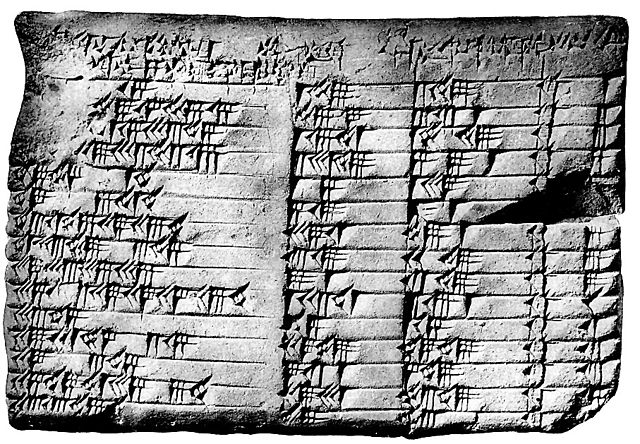25 August, 2017
The new research shows the Babylonians, not the Greeks, were the first to study trigonometry - the study of triangles - and reveals an ancient mathematical sophistication that had been hidden until now. Discovered in the early 1900s, the tablet has been of interest to mathematicians for years because it describes Pythagoras' theorem, yet is thought to have been created around 1800BC, more than a thousand years before Pythagoras was born and started tinkering with triangles.
Mathematicians previously discovered that the tablet contains a special pattern of numbers called Pythagorean triples, which consist of three positive, whole numbers that can be used to determine the hypotenuse, or diagonal side, opposite a right angle in triangles.
The findings shed new light on why the ancient scribes used Plimpton 322 in the first place. He and Dr Wildberger made a decision to study Babylonian mathematics and examine the different historical interpretations of the tablet's meaning after realizing that it had parallels with the rational trigonometry of Dr Wildberger's book Divine Proportions: Rational Trigonometry to Universal Geometry.
UNSW Sydney scientists have discovered the objective of a famous 3700-year old Babylonian clay tablet, revealing it is the world's oldest and most accurate trigonometric table, possibly used by ancient mathematical scribes to calculate how to construct palaces and temples and build canals.
The Ancient Babylonians knew about a form of trigonometry more advanced than the modern-day version - about 1,000 years before its supposed invention by the Ancient Greeks, academics in Australia say. "The mathematical world is only waking up to the fact that this ancient but very sophisticated mathematical culture has much to teach us".
Mansfield learned about Plimpton 322 by chance while preparing material for mathematics students at UNSW.
"This Old Babylonian trigonometry has close links to the modern theory of rational trigonometry", Wildberger told Courthouse News in an email. "With Plimpton 322 we see a simpler, more accurate trigonometry that has clear advantages over our own".
The tablet has four columns and 15 rows of numbers that describe a sequence of 15 right-angled triangles written on it using a base-60, or sexagesimal, system - similar to our clocks. For comparison, the way we normally count is in base 10. "This means greater potential for exact computations".
"But no one, until I came along, had considered that it could be trigonometry in terms of ratios and that is really the fundamental difference". Hipparchus' table of chords introduces angles and relates ratios of sides to angles, necessarily approximately. The study authors expanded on prior research suggesting that Plimpton 322 was broken and incomplete, and they determined that there were originally six columns of figures on the tablet.
"Perhaps the biggest challenge was to overcome our prejudice that modern mathematics must be superior to such ancient mathematics", Wildberger said. It is a fascinating mathematical work that demonstrates undoubted genius.
"To me the significance is really about realizing that mathematics isn't just a pure science, it also has a large cultural component to it, that's really just invisible to us", Mansfield said. Similarities in its writing style to that on other Babylonian tablets enabled experts to date it to between 1822 B.C. and 1726 B.C., around the time that King Hammurabi ruled the Babylonian Empire. He bought it from Edgar Banks, a diplomat, antiquities dealer and flamboyant amateur archaeologist said to have inspired the character of Indiana Jones - his feats included climbing Mount Ararat in an unsuccessful attempt to find Noah's Ark - who had excavated it in southern Iraq in the early 20th century.











